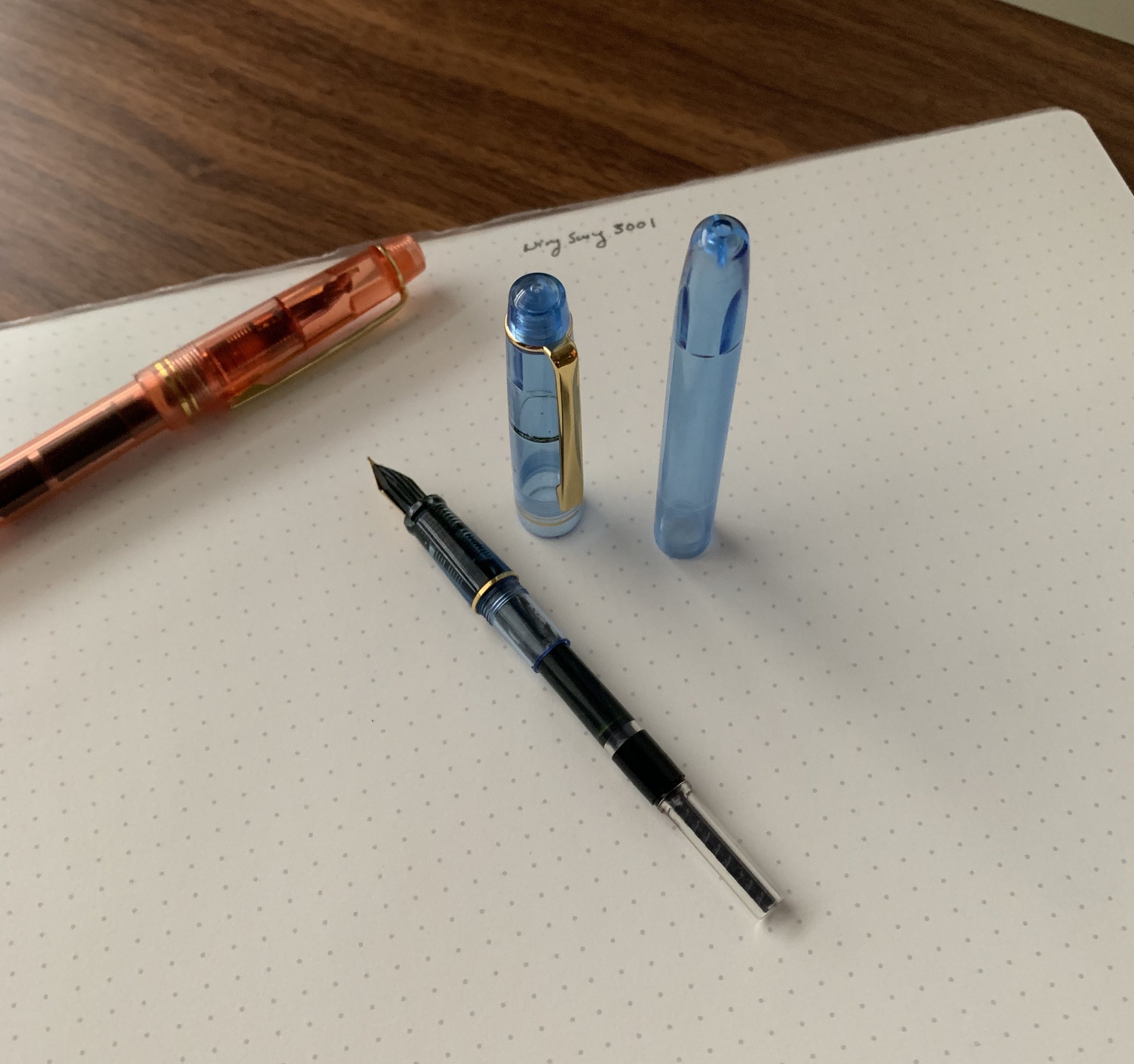I’ve previously touched on how we seem to be living in a new “golden age” of fountain pens. Pen companies - both new and old - are regularly releasing new models every few months or so, each more irresistible than the last. Sure, it may not be the best of times for the “legacy” companies such as Parker, Sheaffer, Waterman, etc., but the likes of Sailor, Pilot, Pelikan, Platinum, Lamy, and a host of relatively recent entrants have stepped it up.
That said, in the ten years or so I’ve been following this industry, there’s been a real void at the “low end” of the price spectrum. Other than two models from Pilot, the Metropolitan and the Kakuno, or the Nemosine Singularity, there just hasn’t been that much available at the sub-$20 price point - much less the $15 price point - and a lot of what was out there was ridiculously low quality. Sure, you can go with a Platinum Preppie, but it still sort of looks like a disposable pen. As vintage collectors are aware, even during the original fountain pen “golden era” from approximately 1920-1970, there was room in the market for so-called “third-tier” brands like Wearever, Majestic, etc. Some of these cheaper pens featured interesting materials, were quite nice looking, and sold for well under a dollar. (CENTS, people, imagine that!) Apparently there’s now a flourishing vintage Wearever collectors’ community.
Wing Sung pens have excellent nibs, in my experience. Most are paired with a transparent plastic feed.
Lately, I’ve been pleasantly surprised by the resurgence of inexpensive pens being manufactured in China. Inspired by bloggers such as Frank Underwater and the Economical Penster, I made a few VERY inexpensive purchases off of Amazon and eBay. We’re talking five-pens-for-$13 kind of cheap. And you know what? The quality was more than acceptable - most of the pens I tried had very nice nibs, solid plastic construction, and some even featured piston fillers. (To be honest, the quality on many of these pens was better than pens I’ve reviewed in the $50-75 price bracket.) Cheap pens have their place. Not only do you not have to worry excessively about losing them on your desk at work, at a hotel when you’re traveling, or even in the car - you can use all those crazy permanent, shimmering, non-freezing, flammable, likely-radioactive, pen-dissolving inks that we all know you want to test out.
OK, Which Pens to Buy?
From left: Wing Sung 3010, Wing Sung 3001, Wing Sung 3008, Wing Sung 618, and Wing Sung 698.
I’ve discussed most of these pens in a previous post where I talked about how I was making more of an effort to test inks. It turns out I’ve found myself using these pens for much more than ink testing, and have carried a couple of the Wing Sung pens as daily writers. The 3001 model has become a favorite.
Wing Sung 3001. These are currently my preferred “cheap” pens. I purchased a five-pack, and every single pen wrote well without any adjustments. The colors look pretty nice too. I especially like the peach and smoke colored demonstrators. The filling system is cartridge-converter, but from what I can tell these don’t accept standard international cartridges. (I’ve heard Wing Sung pens accept Parker cartridges, but have not tried this myself.)
Wing Sung 3010. Along with the Wing Sung 3001, these are the super-inexpensive pens that I’ve been using the most as daily writer. Like the 3001, these pens feature extra-fine nibs and cartridge-converter filling systems. Because the 3010 has a “snap cap”, it might prove to be less durable over time, but then again, the plastic feels pretty thick.
Wing Sung 3008. The Wing Sung 3008 is a piston filling fountain pen that I originally purchased after using them at the DC Pen Show. Of the pens on this list, these are the ones that I’ve confined to “tester” status. They simply don’t feel as sturdy as others that I’ve used. The plastic feels a bit more flimsy and the blind cap on the piston is loose. That said, I’ve had no issues with them leaking or evaporating while they’ve been sitting on my desk, and the nibs are quite nice for a steel extra-fine.
Jinhao Shark Pen. For a pure coolness factor, you can’t beat the Shark Pen. While I don’t own any, I’ve written with them at pen shows and everyone I’ve talked to that bought a pack enjoys them.
A bit more money ($15-20) gets you into some very interesting pens such as the Moonman M2, the Wing Sung 601 Vacumatic, and the Wing Sung 618 and 698 piston fillers. Other people have had great success with the wide variety of acrylics and styles available from PenBBS (who also make popular inks). While I’ve used the Moonman and all of the Wing Sung piston fillers and vacumatics extensively, and they’re great, there’s something incredibly satisfying about writing with an excellent fountain pen that cost you $3. For that reason, if I had to recommend one super-inexpensive pen, the Wing Sung 3001 would take the prize.
Disclaimer: This post contains affiliate links.


